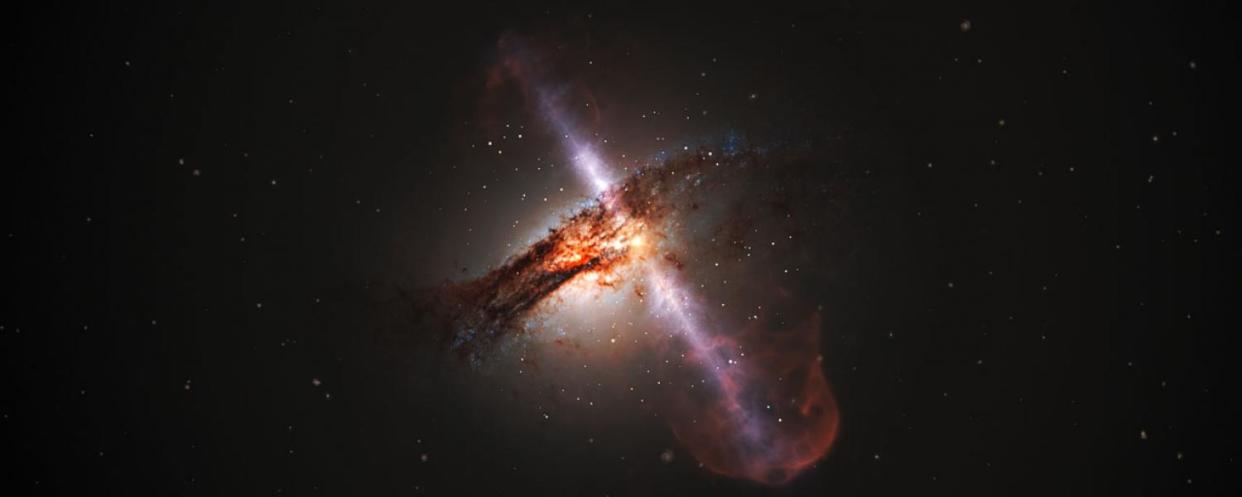Hubble spots huge black hole doing a ‘double burp’ after feeding on gas

A supermassive black hole in a distant galaxy gobbled up gas – then released two ‘burps’ in the form of blasts of high-energy particles.
The galaxy under study, called SDSS J1354+1327 (J1354 for short), is about 800 million light-years from Earth.
The Chandra X-ray observatory detected a bright, point-like source of X-ray emission from J1354, a telltale sign of the presence of a supermassive black hole millions or billions of times more massive than our Sun.
MOST POPULAR STORIES ON YAHOO UK TODAY
Theresa May says Donald Trump ‘welcome’ in the UK as he cancels London trip
Three men jailed for drugging 14-year-old girl and forcing her into prostitution
Britain ‘would vote remain’ in second EU referendum, claims national newspaper poll
Salesman, 34, branded a ‘fat, ginger p**ey’ by his tech firm boss LOSES discrimination case
Driver faces £5,000 fine after driving through 20ft puddle to soak mum with pram
By comparing X-ray images from Chandra and visible-light (optical) images from Hubble, the team found that in the past, the supermassive black hole in J1354 appears to have consumed, or accreted, large amounts of gas while blasting off an outflow of high-energy particles.
The outflow eventually switched off and turned back on about 100,000 years later.
This is strong evidence that accreting black holes can switch their power output off and on again over timescales that are short compared to the 13.8-billion-year age of the universe.
‘We are seeing this object feast, burp, and nap, and then feast and burp once again, which theory had predicted,’ said Julie Comerford of the University of Colorado (CU) at Boulder’s Department of Astrophysical and Space Science, who led the study.
‘Fortunately, we happened to observe this galaxy at a time when we could clearly see evidence for both events.’
So why did the black hole have two separate meals? The answer lies in a companion galaxy that is linked to J1354 by streams of stars and gas produced by a collision between the two galaxies.
The team concluded that clumps of material from the companion galaxy swirled toward the center of J1354 and then were eaten by the supermassive black hole.

 Yahoo News
Yahoo News 

